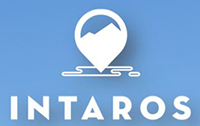This deliverable presents results of work related to in situ measurements, sea ice remote sensing products and reanalysis products in the Fram Strait and in the Arctic Ocean north of Svalbard. The results also include examples of how various observational data and models can be combined and used to describe the ice-ocean environment in the region.
A number of ocean and sea ice statistical products based on long timeseries of repeated oceanographic ship-based surveys, year-round measurements on fixed moorings, and sea ice concentration products are presented. Analysed ocean physical variables include measured in situ subsurface ocean temperature and salinity, and their derived products such as water mass properties, layer thickness and relative ocean heat content. Mean spatial fields and properties averaged for specific water masses as well as mean annual cycle, long-term monthly means are calculated and presented as well as annual and monthly anomalies for selected parameters. A collection of ocean and sea ice products, with examples presented in the report, will be further exploited to provide integrated time series of ocean observations via a dedicated website. The products will be presented as plots and data files (NetCDF) that can be used for calibration and validation of numerical models and as a background for ocean climate and environmental assessments.
The climate induced environmental changes in the Arctic will change both the mechanisms and processes producing natural ocean sound, change the ocean stratification, and increased accessibility and traffic to the Arctic region will change the amount of sound from human activities. To assess the effect of the changes in the Arctic it is important to benchmark the current state of the Arctic acoustic observing capacity and to make recommendations for future sustained acoustic observations. A processing chain for passive acoustic products from distributed acoustic arrays into standard formats (NetCDF), including quality flags, has been established. Furthermore, reanalysis results produced for INTAROS using the GECCO model and 4 DVAR (Gukun et al 2020) has bee used as input to the Bellhop (ray trace model) to better understand capabilities and limitations in acoustic tomography, geo-positioning and communication. Results from this work has been presented in our proceeding papers that have been produced and submitted to the Proceedings of Meetings on Acoustics (POMA).
Results from the remote sensing work are presented in other reports (D6.20, D6.22, D6.23 and D6.24).
Type of deliverable
Report
Number
D6.14
Lead beneficiary
NERSC
Dissemination level
Public
Due (in months)
58
Deliverable file
Document
Open deliverable
YES
